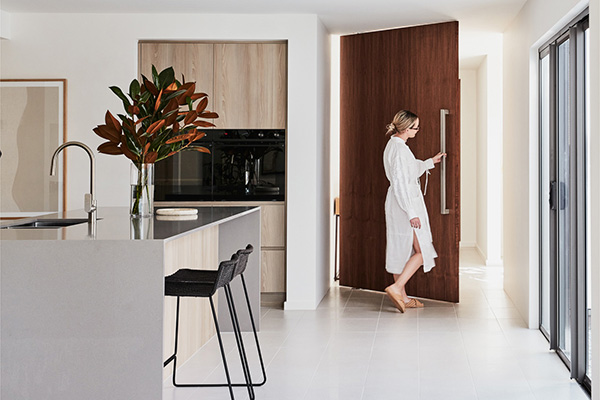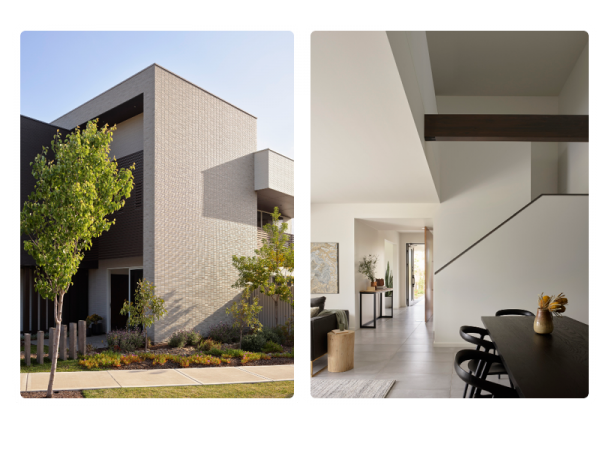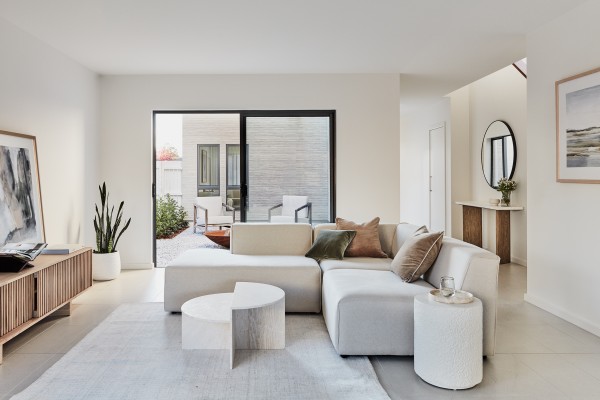Sustainable house checklist: Save money, live in comfort.
When it comes to buying or building a new home, it’s important to think about sustainability for many reasons. A sustainable home has less of an impact on the environment when compared with a typically constructed dwelling. It consumes less energy, delivers savings on the occupants' utility bills, and provides optimal comfort all year round.
What is a sustainable home?
Sustainability means different things to different people, and there are many definitions of what makes a sustainable home. Typically, a sustainable home is one that is made from eco-friendly materials, uses low-impact construction methods, and adapts considered design techniques that work in unison to reduce household energy consumption, resulting in minimal environmental impact and less ongoing costs.
Ultimately, a sustainable home has been designed and constructed in a way that enables its owners to live in comfort without constant concerns about their energy usage and bills.

If you’re looking to buy or build a sustainable home, here are some things to look out for:
ECO-FRIENDLY MATERIALS
To reduce your impact on the environment, look for homes that are made from sustainable, recycled or cleverly manufactured materials. Sustainably-sourced timbers, for instance, can be a more eco-friendly option, especially if they are used for structural purposes and as an alternative to steel, the production of which can require a great deal of energy.
Structural timbers used by Sekisui House for their SHAWOOD homes, for instance, are sourced from sustainably managed forests in northern Europe. All structural timbers are eco-certified, and the structural frame is made from mature trees selected for their superior quality, uniformity and load bearing performance.
PASSIVE HEATING AND COOLING
An important element of a sustainable home is passive heating and/or cooling, which reduces reliance upon artificial heating and cooling solutions, like air-conditioning.
Passive heating and cooling means that the house is designed and built in such a way that it largely heats and cools itself using the sun’s heat, air flow and shade. With passive systems, you require less energy, and save money as well as minimise your impact on the environment.
A living area that’s positioned with a northerly aspect, for instance, can potentially allow you to take advantage of the solar aspect in winter, and reduce heat gain in summer. Similarly, construction joints and window perimeters can be specifically designed and sealed to reduce air leakage, which reduces reliance on artificial heating and cooling.
In Australia, the Nationwide House Energy Rating Scheme (NatHERS) is used to assess homes for their thermal performance. This directly reflects the effectiveness of its passive heating and cooling systems. Houses are given an energy efficiency star rating, and the more stars a house achieves, the better its thermal performance. All states also have basic minimum star ratings for new houses. Before buying or building a new home, be sure to ask what the home’s existing or predicted NatHERS rating is.
ENERGY EFFICIENCY
As well as the amount of energy that your home uses, it’s also important to think about how efficient this usage is.
Sustainable homes use consumption in all kinds of smart and efficient ways. Even simple things, like having LED lights in every room, and implementing motion sensors, can also help make a home more energy efficient.
SOLAR PANELS AND BATTERY STORAGE
The ultimate goal for a sustainable home is to be a net-zero energy home. This means the total amount of energy being used by the building on an annual basis is roughly equal to the amount of renewable energy created on the site. Net-zero energy homes can enhance wellbeing, health and comfort, while reducing costs for owners and tenants.
One of the key ways that net-zero energy can be achieved is through the use of solar panels, and battery storage, where unused solar power generated during the day is stored for use at night or on low-sunlight days.
WATER EFFICIENCY
The way in which a home uses water can often be overlooked when it comes to sustainability, though this is extremely important. Check to ensure that the home’s amenities, such as toilets, tapware and shower heads, all have an efficiency rating.
Innovations such as water pod systems, installed in the slab of the home, can also provide a more efficient use of water.
Does Sekisui House make sustainable homes?
Sekisui House has been at the forefront of research and development in net-zero energy homes since 2008 when they unveiled the world’s first Zero Emission House at the Hokkaido Toyako G8 summit. They have now constructed over 60,000 net-zero energy homes for families across Japan and are set to expand this capability into their global operations – including Australia.
A net-zero energy home is one with zero net energy consumption, meaning the total amount of energy used by the home on an annual basis is roughly equal to the amount of renewable energy created on the site.
Completed in 2019, SHINKA House was the first prototype net-zero energy home constructed by Sekisui House outside of Japan. Utilising Sekisui House’s proprietary SHAWOOD construction system as its structural core, the vision for
SHINKA House was to demonstrate how active and passive design considerations could deliver a highly functional, luxurious, and energy efficient residence within a metropolitan Sydney location – a home that was not only net-zero energy, but also an attainable proposition for Australians to build.


To learn more about Sekisui House’s record in sustainability, visit the following link.


